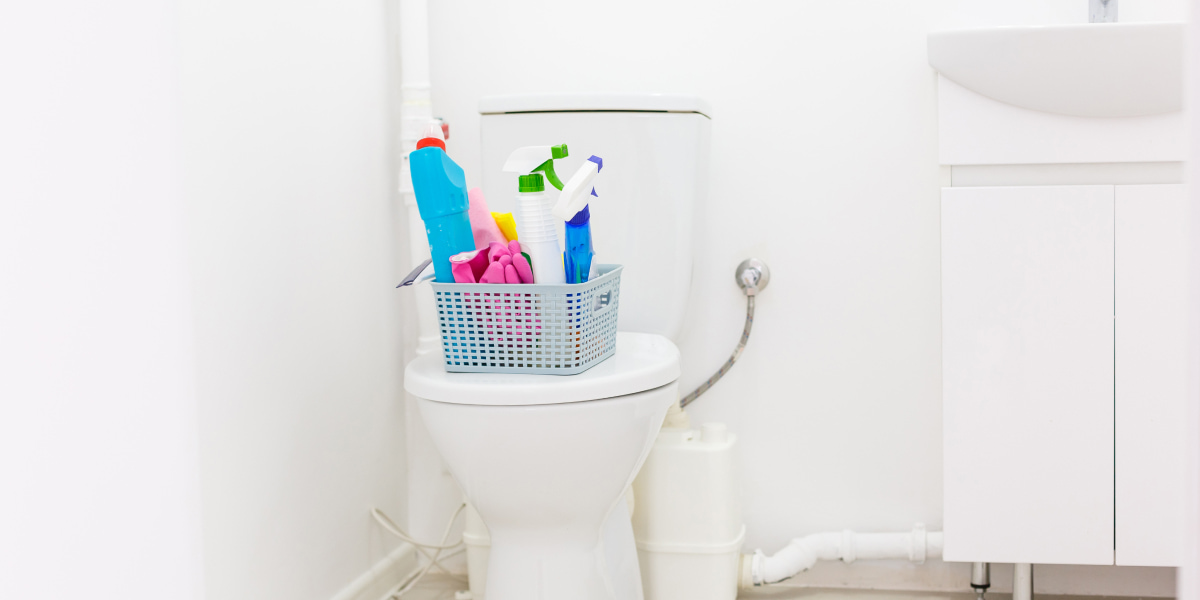Published on November 15th, 2022
Last updated on February 3rd, 2023
7 Fast Ways How To Remove Hard Water Stains From Toilet

A shining bathroom is the dream of any housekeeper. Still, a smelly toilet with old hard water stains could destroy perfect illusions. To renovate the aesthetic look and improve the hygienic state, you may use branded chemical solutions. The other valuable method is to follow the recommendations of experienced specialists experimenting with home cleaning. Vinegar, baking soda, and even wooden ash are effective ingredients for removing hard water stains in toilets.
To prepare a soft mixture for your bathroom facility, pay attention to disinfection and not aggressive substances. Such cleaning solutions are safe for human health and do not shorten sanitary hardware’s wear and tear period.
In this article, you will find answers to the difficult question, “How to remove hard water stains from a toilet?” and select the most productive method based on several conditions:
- the complexity of dirt;
- pipeline water chemical qualities;
- available cleaning ingredients;
- time to fix the inner toilet bowl.
Bearing in mind the in-question preconditions, you may select the most effective methods to fight with toilet stains without damages to bathroom hardware structure. Each method is worth your attention and perfectly deals with the set cleaning tasks.
7 Best Methods for Cleaning Stains in Toilet Bowls
Before cleaning toilet stains, compare the pros and cons of each appropriate method to remove old spots and return shining effects by using:
- organic and eco-friendly chemicals;
- eye and hand protection supplies;
- scheduled cleaning sessions to avoid repeated cases.
To get rid of hard water stains in bathrooms, every housekeeper could apply groups of cleaning methods:
- casual homemade alternatives;
- manufactured acid-based solutions;
- washing alkaline agents.
1. Vinegar and Baking Soda
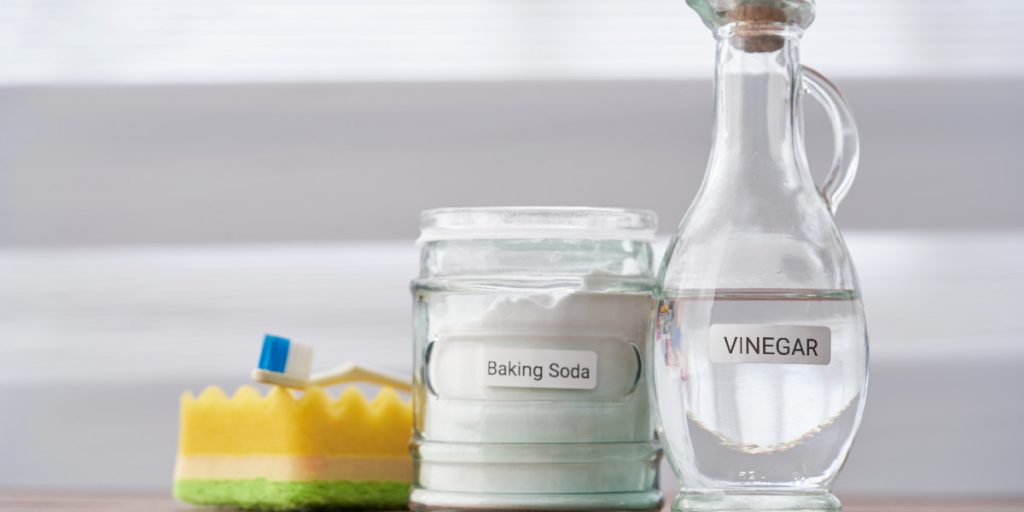
This simple recipe includes only two ingredients:
- pure baking soda – 400 – 500 g;
- apple vinegar of high concentration (nearly 9%) – 1 litres.
The algorithm of the cleaning actions for toilet hard water stain removal retains:
- Water the inner walls of the toilet bowl;
- Sprinkle the deteriorated areas with baking soda powder;
- Leave for 30 minutes to enhance the restoration process;
- Apply the concentrated vinegar onto the baking soda to stimulate oxygen reactions and remove old rust-like spots;
- Use special brushes to fight complicated spots;
- Flush the remaining cleaning solutions and enjoy the result.
2. Mustard Powder
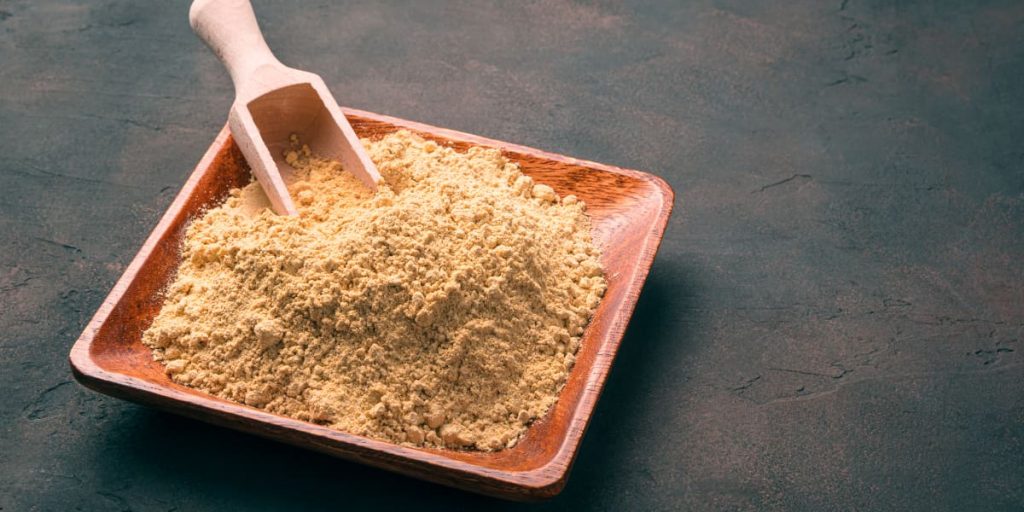
The natural anti-bacterial cleaning ingredient is another excellent solution to renovate toilet stains without expensive, aggressive supplements. Based on organic biochemical qualities, mustard powder removesmany kinds of infections and bacteria. This ingredient with profound cleaning powers could substitute dishwashing solutions. To prepare an effective toilet scrub, you need only three elements:
- Two tablespoons of dry mustard powder;
- Two tablespoons of pure lemon juice;
- Four tablespoons of potato starch.
Once you have gathered all ingredients, you should mix them until you get a homogeneous mass. Put the scrub-like mixture on the toilet and wait for at least 30 minutes. The final step of this cleaning session should refer to smooth brushing movements to remove the remains. Stunning shine is guaranteed from hard water stains in toilets.
3. Lemon and Wooden Ash
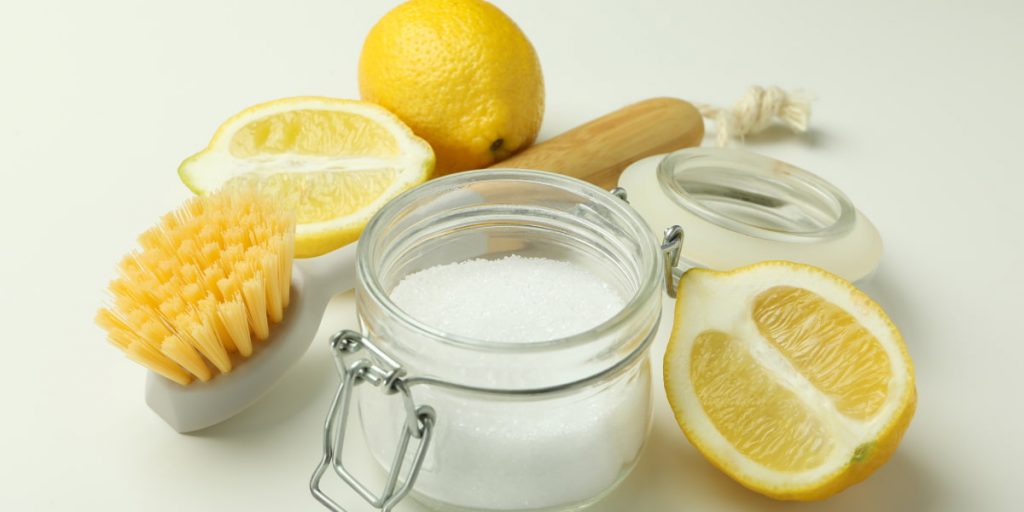
Owners of cozy wall fireplaces could experiment with straightforward and beneficial methods for cleaning toilet bowl stains. Rust spots originate from abnormal pipe water qualities, urine, or improper cleaning procedures. Nevertheless, this dirt can’t resist acid reactions combined with nutritional additions. Wooden ash contains various minerals like potassium, phosphorus, and magnesium, contributing to maximized fruitful results. In addition, these components support fast cleaning outcomes beyond stains in toilet bowls.
For one toilet, you will need to arrange a potent powder consisting of:
- Crystallized lemon acid. Two packages would be enough to get rid of the complicated dirt;
- Fresh wooden ash.
Equally proportionated ingredients are ready to put on the inner part of the previously watered toilet bowl. Intense movements help to remove stains and return an attractive look for your bathroom hardware. The only adverse effect of this cleaning approach is prolonged washing sessions for your toilet brush, sponge, or micro fabric cloth.
4. Organic Manufactured Cleaning Stuff Against Toilet Stains
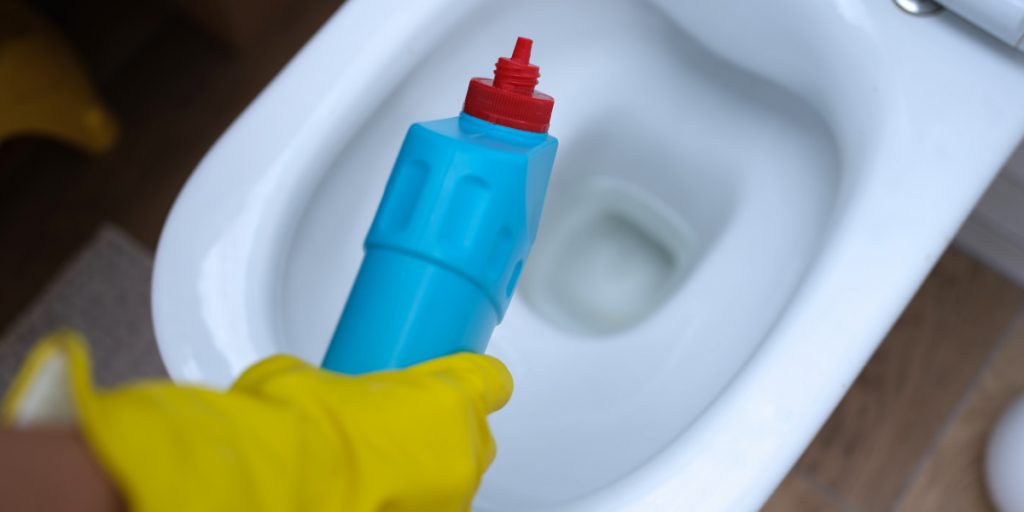
The environment-friendly technologies offer a broad assortment of cleaning sprays, active foam or cleaning powder with solid crystals. Thanks to the technological specifications, those grains remove dirt from the toilet bowl’s inner side. However, this cleaning tactic does not cope with the dirt of the high-quality ceramic equipment. It is due to the significant risks of damages and micro scratches on the surface. Also, the follow-up cleaning procedures deteriorate the toilet bowls, and stain removal worsens.
If you decide to practice this ready-made organic mixture for toilet hard water stain removal, perform several sophisticated steps:
- Put spray, foam, liquid, or powder on the dirty parts or the cleaning cloth, depending on the manufacturer’s instructions;
- Apply intense circling movements to occupy a broader surface;
- Wait for 20 to 30 minutes and observe the chemical reactions;
- Repeat the sponge or microfiber cloth manipulation to strengthen the final results;
- Flush the remains.
5. Orthophosphoric Acid
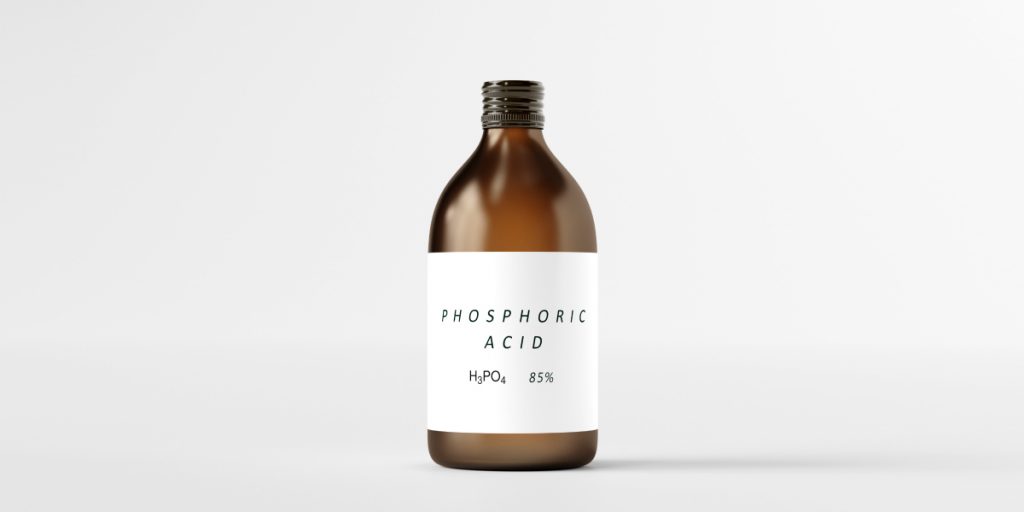
Aggressive acid-based solutions are the number one against hard water stains in toilets. Using an orthophosphoric mixture requires proper preparatory measures. Thus, take care of your hands, nose, and eyes, avoiding direct contact with hazardous liquid.
Depending upon the spots’ complexity and age, you may apply purely concentrated liquid or manufactured solutions with the appropriate ingredient. The comparable advantage of cleaning methods with orthophosphoric acid is their crucial impact on stains derived from rust or water hardness.
To renovate your toilet from limescale, build the helpful action plan:
- Mix 0.5 litres of tap water and 100 ml of the acid;
- Combine ingredients slowly and protect open parts of your body because hard water stains in toilets require potent agents;
- Apply the mixture on the inner side of your toilet, using the special brush with natural bristles;
- Make a break for 1 to 12 hours to activate the solution. Time should comply with the dirt degree;
- After that, remove the acidic liquid with a pure baking soda solution. To this end, dissolve one tablespoon of dry ingredients in water, considering the acid-liquid volume.
6. Hydrochloric Acid
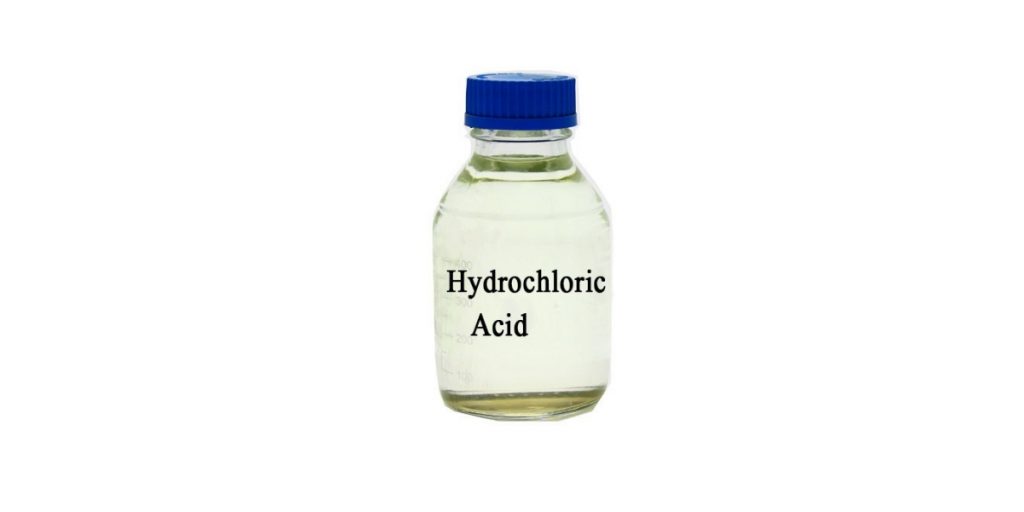
The other cleaning method that clarifies an issue, “How to remove hard water stains from a toilet?” is to pay attention to hydrochloric acid. However, working with these aggressive chemicals is too dangerous for bathrooms and human health. Thus, exclude this recommendation if your pipes, toilet joins, or other sewerage facilities are made from plastics. Otherwise, you are at risk of conducting capital repair in your bathroom.
This acid type is effective against rust stains, typical for:
- Old houses;
- Apartments for senior, disabled persons who can not maintain their toilet cleanness;
- Buildings with a high density of visitors, like hotels, office centres, and malls.
You need to pour 0.5 litres of pure hydrochloric acid to clean the toilet stains. After a particular period, properly water the surface and remove all the remaining dirt or acid liquid.
If your toilet stains are not so complicated, substitute this acid with a similar assortment – vinegar, lemon juice, or oxalic.
7. Alkaline Solutions
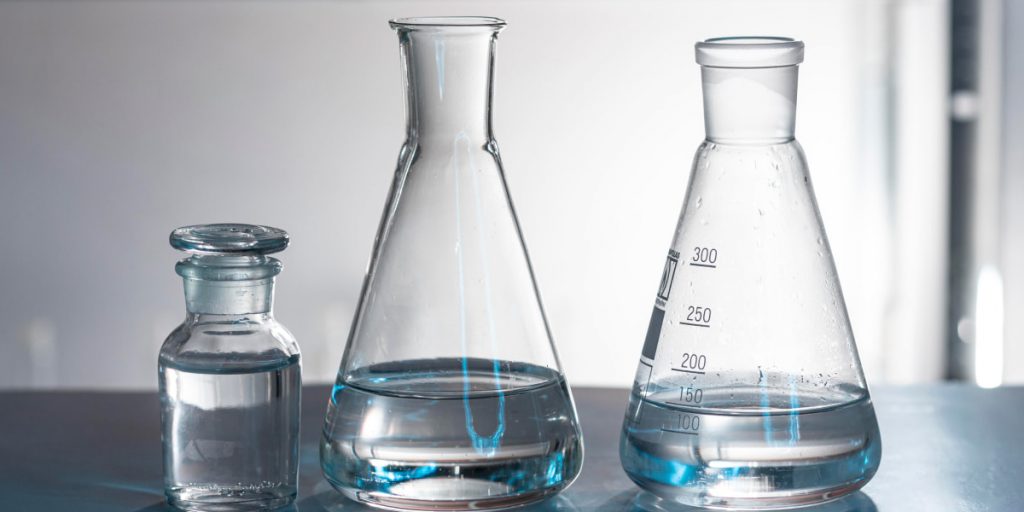
Unlike the industrial origin of toilet stains, you may face another problem – bladder stones or the consequences of clogged bathroom equipment. In this case, alkaline solutions are perfect for returning shine and freshness.
Before starting the toilet hard water stain removal, keep the following recommendations to eliminate risks of your bathroom hardware deterioration:
- Use the exact dosages suggested for the acid-contained solutions;
- Do not neglect the safety rules for breathing and visual organs;
- Flush several times after the cleaning sessions to remove all chemicals.
Summary
Prioritize the cleaning strategy with points which save your time and bathroom equipment from hazardous chemicals or incorrect solutions. Scheduled toilet maintenance guarantees its prolonged lifespan and reduces the risks of having difficult water stains inside the toilet bowl.
FAQ
Does hard water cause toilet stains?
Iron-enriched tap water is a source of in-depth brown stains inside the toilet bowl. Therefore, you should pay proper attention to scheduled scrubbing procedures and apply the softening aroma to maintain the toilet’s cleanness and freshness.
How do I get rid of brown limescale in my toilet?
Depending upon the complexity of toilet limescale, you need to use vinegar and baking soda solutions. If you prefer the manufactured cleaning supplies, choose an assortment based on acid extract.
What is the best toilet bowl cleaning secret to removing hard water stains?
Every dirt nature should comply with the appropriate cleaning substances. For instance, limescale and rust are removed after using acid-supported reactions. Protein-contained spots and bladder stones are weak beyond alkaline solutions.
How to remove yellow stains in private house toilets?
Sometimes private houses with individual water supply and disposal systems have common problems like yellow stains on the inner side of their toilet bowls. However, acid-based solutions and proper maintenance could quickly remove these spots.


